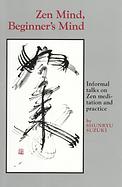PBS Arts : The Art of the Buddha
Across two and a half millennia, the life of the Buddha has been depicted in art rich in beauty and complexity. Most paintings and sculptures focus on key episodes in his spiritual journey: his birth and childhood, his renunciation of worldly life, his enlightenment, his first teaching, his life as a teacher, and his death.
The Buddha | PBS
first half | more at TheBuddhaPBS's Channel
This documentary for PBS by award-winning filmmaker David Grubin and narrated by Richard Gere, tells the story of the Buddha’s life, a journey especially relevant to our own bewildering times of violent change and spiritual confusion. It features the work of some of the world’s greatest artists and sculptors, who across two millennia, have depicted the Buddha’s life in art rich in beauty and complexity. Hear insights into the ancient narrative by contemporary Buddhists, including Pulitzer Prize winning poet W.S. Merwin and His Holiness the Dalai Lama. Join the conversation and learn more about meditation, the history of Buddhism, and how to incorporate the Buddha’s teachings on compassion and mindfulness into daily life."
Gross National Happiness
"Bhutan – Taking the Middle Path to Happiness” is a documentary on the Himalayan Kingdom of Bhutan and its development policy of “Gross National Happiness.
Imagine a country where the peoples’ happiness is the guiding principle of government. Imagine a people who see all life as sacred, a land with abundant renewable energy, a nation committed to preserving nature and its culture. Imagine a country where the government’s goal is “Gross National Happiness.” Where is this Shangri-La? Bhutan.
But can a place like Bhutan really exist? Can such ideals be realized? Can this small, geographically isolated country tucked away in the Himalayans truly protect its environment and culture as they open their doors to the West?”
The concept of taking “the middle path” is one rooted in the Bhutanese view of the world, a simple message: happiness lies in the middle path. Neither overindulging in the world’s pleasures nor rejecting the world’s goodness can lead to a prosperous and peaceful society. Happiness can only be found by taking the middle path – the path that provides the needs of mankind without sacrificing the life generating diversity of nature.
But now with Bhutan’s entry into the global marketplace, the introduction of television, advertising and the social pressures of consumerism can Bhutan maintain this delicate balance?
BHUTAN: Taking The Middle Path To Happiness

















